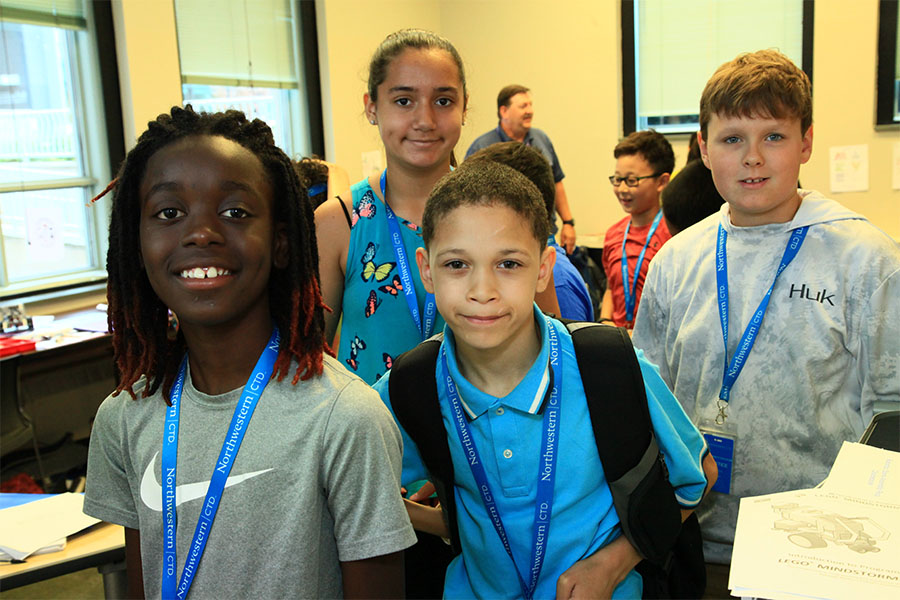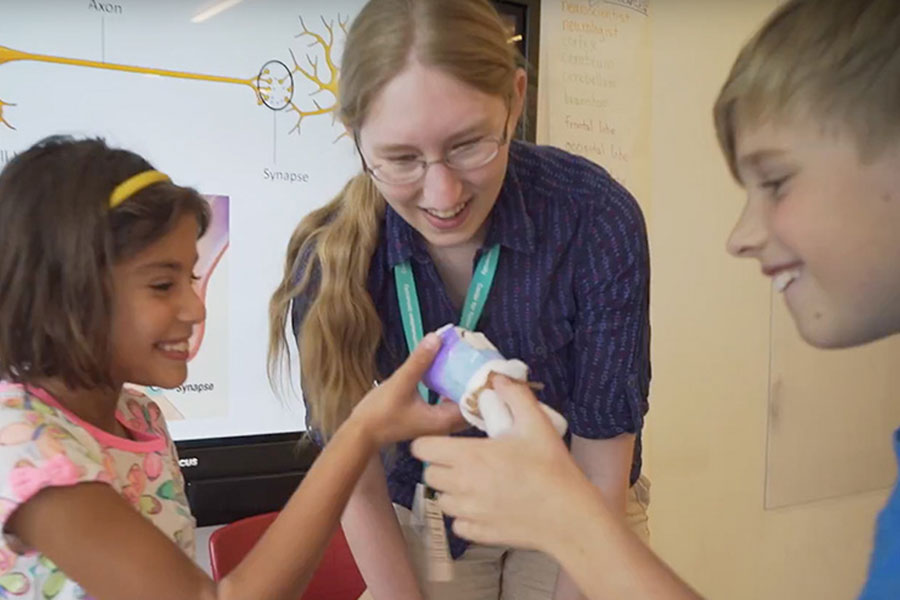Locating the Source of Language and Learning: A Neuroscientist Discusses Her Work
by Ross Middleton 
Powerful, complex, and mysterious, the human brain grows most rapidly in childhood, when millions of connections form in each second of our early years. Throughout this process, and as children reach school age, parents may notice signs of certain gifts, talents, and, in some cases, developmental disorders. What do we know about the roots of such learning challenges, including dyslexia and autism? How can we use science and language to understand—and support—children at key stages of development? Such questions are at the heart of the research of Communication Sciences and Disorders professor Dr. Elizabeth Norton, who shared some of her experiences in an interview with CTD.
A director of the language-focused LEARN Lab at Northwestern and a leader in the university’s Institute for Innovations in Developmental Sciences, Dr. Norton notes that many developmental challenges are part of the complexity of our neurology and our biology. “We know that our abilities to do things like learn language, read, pay attention, and engage socially are all supported by processes in the brain,” Norton explains, “Differences such as language disorders, dyslexia, ADHD, and autism spectrum disorder are associated with differences in the brain. These disorders also tend to run in families, suggesting that there are genetic factors at play.” Norton recounts that advances in brain imaging and genetics have shown promise, but have yet to fully explain the mechanics of these differences in brain and behavior.
Though Norton clarifies that learning and reading disorders are not likely the result of environmental factors, family and school support is nonetheless crucial. For example, parents and teachers of kindergarten students might want to seek greater assistance for children who struggle with learning the names and sounds of letters, or identifying rhymes or similar sounds in words. An educational advocate who has worked with the Illinois State Board of Education and Decoding Dyslexia, Dr. Norton recognizes the importance of early screenings in schools. “Too often, schools have a ‘wait to fail’ mentality, where intervention is pushed down the road in favor of waiting,” Norton observes. Though she recognizes the limited resources in many schools, she strongly believes in the transformative power of focused support, asserting “it’s crucial that schools and teachers know how to look at a child’s profile of strengths and needs and be able to tailor the right type of intervention for that child.”
Norton’s recommendations and research are informed by a longtime interest in language and a distinguished career as a studious observer. A college language-acquisition course grew into a degree in language and brain development, followed by a PhD in human development and post-doctoral work in brain research. And in her years as a teacher, she worked firsthand with the complexities of young minds. “Seeing the amazing variation among my students motivated me to continue studying the brain as a way to help us understand the many processes that unfold as children develop,” she reflects. These experiences led her to her current work, examining the uses of brain imaging and early intervention in children with dyslexia, autism, and other learning challenges.
For all Dr. Norton has discovered about language and the developing brain, certain questions about achievement and ability remain, for the moment, unanswered. Among other areas of study, Norton would like to add to currently limited research on “twice exceptional” students who may find themselves labeled as gifted in one context and challenged in others. Though many children with learning difficulties may require consistent, explicit classroom instruction, Norton offers that some at-risk students may find themselves excelling in reading due to strengths on the right hemisphere of the brain. “There is also a lot of anecdotal evidence that individuals with dyslexia have particular strengths in some kinds of visual processing,” she adds, indicating there is still much to learn about the workings and potential of young minds.
This summer’s Opportunities for the Future Conference features a talk by Dr. Elizabeth Norton: The Learning Developing Brain: Myths and Facts. To learn more about our annual family event and Dr. Norton’s session, please visit our family conference page.
 Ross Middleton is an independent writer and formerly part of CTD’s Summer Program staff. He received his BA in English Literature from Wesleyan University and an MFA in Writing from Sarah Lawrence.
Ross Middleton is an independent writer and formerly part of CTD’s Summer Program staff. He received his BA in English Literature from Wesleyan University and an MFA in Writing from Sarah Lawrence.

